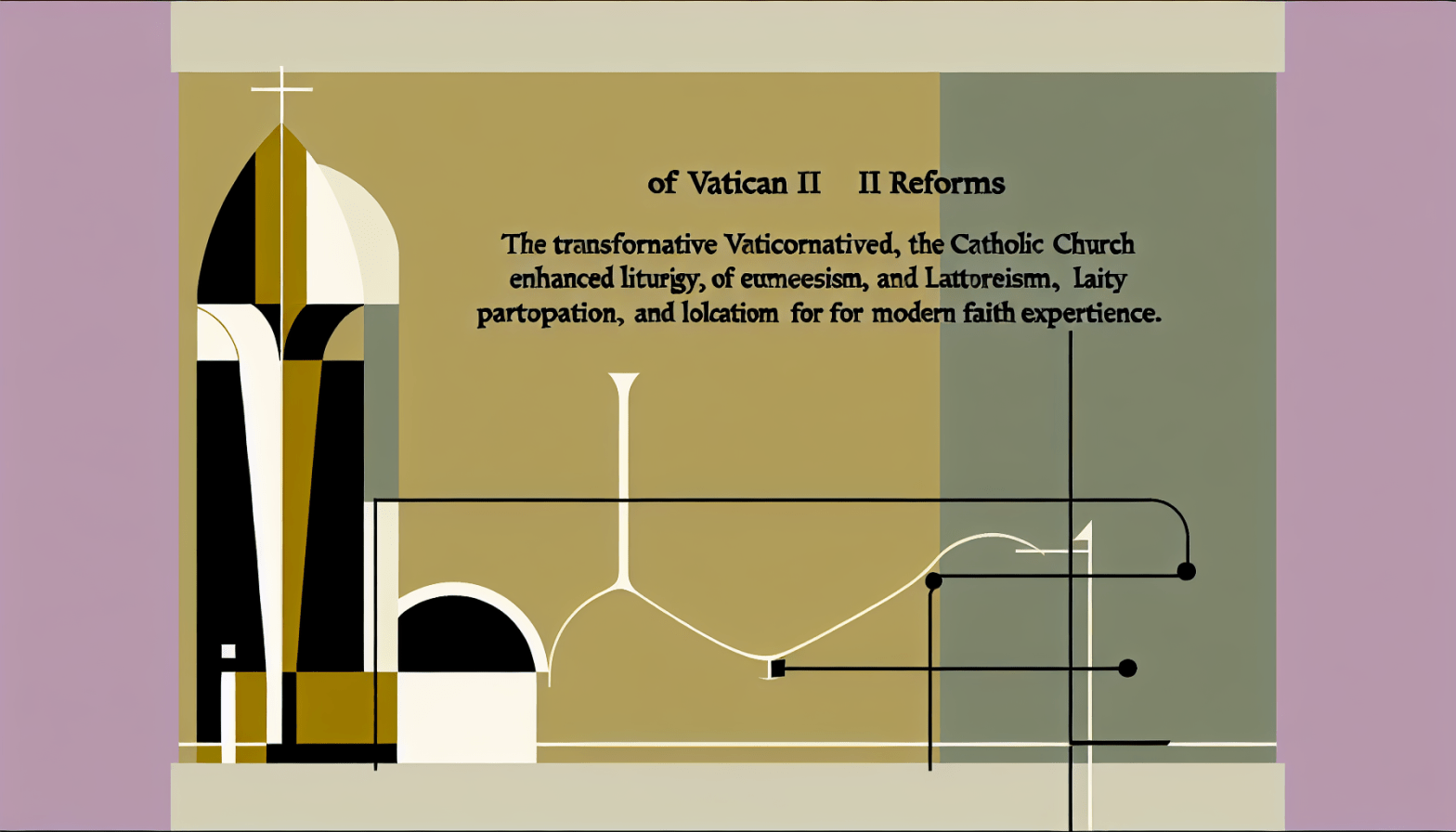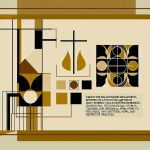Understanding Vatican II Reforms: A New Era for the Catholic Church
The Vatican II Reforms, formally known as the Second Vatican Council, represent a landmark event in the history of the Catholic Church. Convened by Pope John XXIII from 1962 to 1965, this ecumenical council sought to address various challenges facing the Church and to engage more meaningfully with the modern world. This comprehensive set of reforms transformed the Church’s practices, theology, and outreach. In this blog post, we will explore the significance of the Vatican II Reforms, their key documents, their impact on liturgy, ecumenism, and the laity, and how they shape the Church today.
What Were the Vatican II Reforms?
The Second Vatican Council was a groundbreaking initiative aimed at addressing contemporary issues within the Church and redefining its relationship with the world. The council assembled bishops, theologians, and observers from around the globe, reflecting a diverse understanding of Catholicism. Vatican II was convened to promote renewal and unity, and its reforms are encapsulated in several key documents.
Key Documents of Vatican II
-
Sacrosanctum Concilium: This document focused on the liturgical reform of the Church. It aimed to encourage active participation of the laity in the liturgy, promoting a deeper understanding of the Eucharist and other sacraments.
-
Lumen Gentium: This was the Dogmatic Constitution on the Church, which addressed the nature and mission of the Church in the modern world. It emphasized the Church as a people of God, moving away from a purely hierarchical structure.
-
Dei Verbum: This document dealt with divine revelation and the importance of Scripture in the life of the Church. Vatican II reaffirmed the significance of both Scripture and Tradition in the Catholic faith.
-
Nostra Aetate: Often referred to as the Declaration on the Relation of the Church to Non-Christian Religions, it transformed the Church’s approach to other faiths, promoting dialogue and understanding rather than conflict.
-
Gaudium et Spes: This pastoral constitution addressed the Church’s engagement with contemporary issues, including social justice, peace, and the role of the Church in society.
The Impact of Vatican II Reforms on Liturgy
One of the most visible changes enacted by the Vatican II Reforms was in the area of liturgy. Prior to the council, the Mass was conducted primarily in Latin, which often alienated the faithful. Sacrosanctum Concilium led to the implementation of several essential changes:
Emphasis on the Vernacular
The use of vernacular languages in the liturgy was one of the council’s groundbreaking decisions. By allowing Mass to be celebrated in local languages, the Church aimed to foster a sense of community and inclusivity. This change made the Eucharistic celebration more accessible to the laity and encouraged greater participation.
Active Participation of the Laity
Vatican II emphasized that active participation is integral to the liturgical experience. The reforms encouraged congregations to engage in responses, prayers, and songs, turning the Mass into a communal act of worship rather than a passive observation. This shift has helped Catholics develop a deeper spiritual connection with the liturgy.
Revisions to Liturgical Practices
The Vatican II Reforms also led to a re-evaluation of various liturgical practices. Many rites were simplified, while some, such as the introduction of the sign of peace, were enhanced to promote fellowship within the congregation. These changes aimed to celebrate the communal aspect of the Church.
Promoting Ecumenism Through Vatican II
One of the significant goals of the Vatican II Reforms was to foster ecumenism—the movement toward unity among Christian denominations. Nostra Aetate plays a crucial role in this effort by encouraging dialogue between the Catholic Church and other religions.
Interfaith Dialogue
Vatican II recognized that the Catholic Church should engage positively with other faiths. This led to a more open attitude towards Judaism, Islam, and other religions, promoting respect and understanding. The declaration sparked many initiatives and dialogues that aimed to build bridges between different religious communities.
Ecumenical Initiatives
The council inspired numerous ecumenical efforts designed to foster collaboration among Christian denominations. Churches began to work together on social issues, theological discussions, and shared worship experiences. This movement toward unity was reinforced by subsequent papacies, emphasizing the importance of working toward a common Christian witness.
Empowering the Laity
The Vatican II Reforms recognized the critical role of the laity in the life of the Church. Lumen Gentium highlighted the dignity and call of all baptized Christians to participate fully in the mission of the Church.
Increased Lay Participation
The reforms encouraged laypeople to take on more active roles in parish life, including liturgical ministries, education, and social justice initiatives. This shift acknowledged that the Church is not solely a hierarchical institution but a community of believers working together for the greater good.
The Role of the Laity in the Church’s Mission
Catholics were called to embrace their baptismal identity, realizing that they have a unique mission in the Church and the world. The Vatican II Reforms encouraged laity to engage in social issues, advocating for justice, peace, and charity in society. This shift has invigorated local communities and promoted a sense of shared mission.
The Long-Term Influence of Vatican II Reforms
The impact of the Vatican II Reforms continues to be felt in today’s Catholic Church. The council’s teachings have inspired new approaches to theology, pastoral care, and social engagement. Many contemporary issues, including interfaith dialogue, social justice, and the role of women in the Church, are influenced by the principles outlined during Vatican II.
Ongoing Implementation of Council Teachings
While significant progress has been made, the implementation of Vatican II’s teachings remains a dynamic process. Different regions and communities within the Church may interpret the reforms in various ways, leading to a rich diversity of expressions of the Catholic faith. Engaging in this conversation remains important as the Church continues to navigate its identity in a rapidly changing world.
Challenges and Critiques
Despite the enthusiasm for the Vatican II Reforms, there have also been challenges. Some segments of the Catholic community express concerns that the reforms led to a loss of traditional practices and beliefs. Others argue for a more profound integration of the council’s teachings into everyday Church life. Ongoing dialogue within the Church is essential to address these challenges and ensure a faithful implementation of Vatican II’s vision.
Conclusion: The Legacy of Vatican II Reforms
The Vatican II Reforms are more than just historical events; they represent a transformative phase in the Catholic Church’s journey toward renewal and engagement with the modern world. Through its focus on liturgical inclusivity, ecumenism, and the empowerment of the laity, Vatican II has reshaped the Church’s identity and mission. As Catholics around the globe continue to reflect on these reforms, the spirit of Vatican II remains alive, inviting the Church to embrace its call to holiness, unity, and service in an ever-evolving landscape.
The legacy of the Vatican II Reforms is not static; it invites ongoing reflection and adaptation to ensure that the Church remains a vibrant and welcoming community for all. Through continued engagement with the principles established at the council, Catholics can contribute to a more unified and compassionate world, echoing the transformative message of Vatican II for generations to come.




